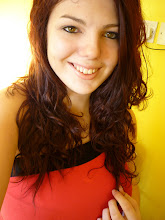

I posted the link to this post onto my facebook status as well as sending it to my contacts on MSN. I asked them their honest opinion on them as I wanted the oppurtunity to improve. I recieved good responsese, nice compliments and a few replies on how I could improve which I was greatful for.
" Front page- I love! Busy, colourful, eye catching. Contents page- layout is good, easy to read and locate what you want to look at. Double page spread- Like the font of the title, love the way the main photo is on one side and the writing on the other and the way you've pulled out a quote right in the middle."
"I think it's really good..If it was me I would have made the contents page a bit more colourful or something"
"I really like it, it looks great, I think it could definately be made into a real magazine."
"It's fairly good however the contents could do with a background or a bit more colour, it's a bit boring."
I took what my audience had to say on board and on the final cotents page I added the green boxes around the sub-headings.













